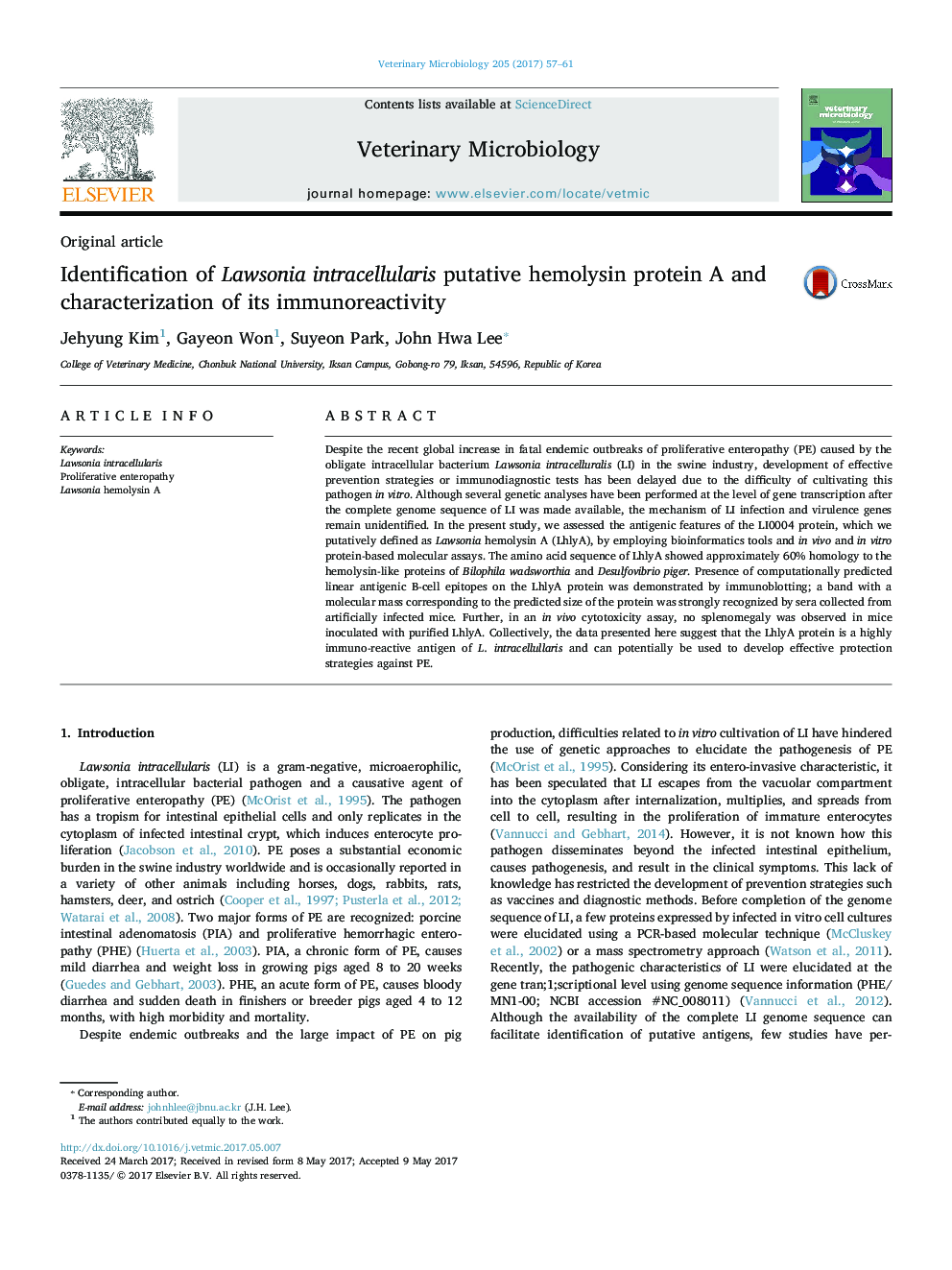| Article ID | Journal | Published Year | Pages | File Type |
|---|---|---|---|---|
| 5545387 | Veterinary Microbiology | 2017 | 5 Pages |
Abstract
Despite the recent global increase in fatal endemic outbreaks of proliferative enteropathy (PE) caused by the obligate intracellular bacterium Lawsonia intracelluralis (LI) in the swine industry, development of effective prevention strategies or immunodiagnostic tests has been delayed due to the difficulty of cultivating this pathogen in vitro. Although several genetic analyses have been performed at the level of gene transcription after the complete genome sequence of LI was made available, the mechanism of LI infection and virulence genes remain unidentified. In the present study, we assessed the antigenic features of the LI0004 protein, which we putatively defined as Lawsonia hemolysin A (LhlyA), by employing bioinformatics tools and in vivo and in vitro protein-based molecular assays. The amino acid sequence of LhlyA showed approximately 60% homology to the hemolysin-like proteins of Bilophila wadsworthia and Desulfovibrio piger. Presence of computationally predicted linear antigenic B-cell epitopes on the LhlyA protein was demonstrated by immunoblotting; a band with a molecular mass corresponding to the predicted size of the protein was strongly recognized by sera collected from artificially infected mice. Further, in an in vivo cytotoxicity assay, no splenomegaly was observed in mice inoculated with purified LhlyA. Collectively, the data presented here suggest that the LhlyA protein is a highly immuno-reactive antigen of L. intracellullaris and can potentially be used to develop effective protection strategies against PE.
Related Topics
Life Sciences
Agricultural and Biological Sciences
Animal Science and Zoology
Authors
Jehyung Kim, Gayeon Won, Suyeon Park, John Hwa Lee,
